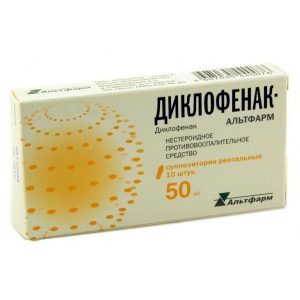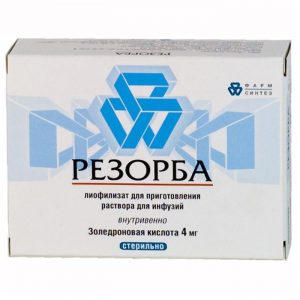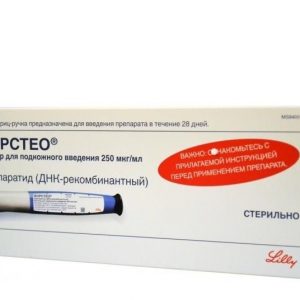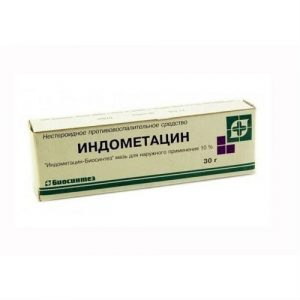Description
Release form
Cream for external use.
Packaging
tube 60g
Pharmacological action
Pharmacodynamics
Aceclofenac is a non-steroidal anti-inflammatory drug with anti-inflammatory and analgesic effects. The drug inhibits the development of edema and erythema, regardless of the etiology of inflammation. Aceclofenac inhibits the formation of prostaglandins and leukotrienes by reversibly suppressing types 1 and 2 cyclooxygenase.
The established clinical efficacy of the drug is complemented by good tolerance. The use of Aertal ® cream is advisable in patients with traumatic injuries or inflammatory diseases of the musculoskeletal system.
Pharmacokinetics
Absorption
After application, aceclofenac is absorbed from the application area, quickly reaching saturation. It accumulates in the absorption zone, which contributes to an increase in anti-inflammatory activity, and gradually enters the systemic circulation in small quantities, and therefore the risk of side effects, including on the gastrointestinal tract, is minimized.
Distribution
Aceclofenac is distributed throughout the body.
Excretion
Aceclofenac is metabolized in the liver and is excreted slowly by the kidneys and through the intestines, partially unchanged.
Contraindications
Hypersensitivity to the components of the drug (aceclofenac) or any of the excipients
past intolerance to NSAIDs, including, diclofenac
past presence of asthma attacks, urticaria rash or acute rhinitis while taking acetylsalicylic acid (ASA) or other NSAIDs
the presence of varicella-zoster virus infection.
pregnancy.
children under 18 years old.
violation of the integrity of the skin at the intended site of application.
With caution: hepatic porphyria (exacerbation), erosive and ulcerative lesions of the gastrointestinal tract (in the exacerbation phase), severe hepatic and renal impairment, chronic heart failure, asthma, urticaria, or acute rhinitis, caused by ASA or other NSAIDs, bleeding disorders (i.e. including hemophilia, prolonged bleeding time, tendency to bleedings), advanced age, lactation.
Use during pregnancy and lactation
Pregnancy
Cream Aertal ® is contraindicated in pregnancy. Information on the use of Aertal ® cream during pregnancy is not available.
Breastfeeding period
It is not known whether aceclofenac passes into breast milk. Aertal ® Cream should not be used during breastfeeding.
Special instructions
If irritation develops at the site of application of Aertal ® cream, discontinue its use and carry out appropriate treatment.
After applying Aertal ® cream, wash your hands, unless the hands are the place to apply the cream.
Aertal ® Cream should not be applied to eyes and mouth.
Aertal ® Cream can not be used to treat open wounds, mucous membranes, as well as irritation (eczematous) of the skin or in cases where there is any other pathological process on the skin at the place of application of the cream. The cream should be applied only to intact skin.
Data on the use of Aertal ® cream in children are not available.
To prevent photosensitivity reactions, protect the area on which the cream is applied from exposure to sunlight.
Hypersensitivity and skin reactions. Like other NSAIDs, Aertal ® cream at the beginning of use can cause allergic reactions, including anaphylactic / anaphylactoid reactions. There are reports of the occurrence in rare cases of serious skin reactions, including fatal, including exfoliative dermatitis, Stevens-Johnson syndrome, and toxic epidermal necrolysis associated with NSAIDs. Patients are at the highest risk of such reactions at the beginning of treatment, skin reactions in most cases occur during the first month of treatment. If skin rash, lesions of the mucous membranes or other manifestations of hypersensitivity occur, treatment with Aertal ® cream must be discontinued.
In rare cases, the varicella-zoster virus can cause serious complications in the form of infections of the skin and soft tissues. Currently, the negative impact of NSAIDs on the course of these infections cannot be completely ruled out. In this regard, it is not recommended to use aceclofenac p Patients are at the highest risk of such reactions at the beginning of treatment, skin reactions in most cases occur during the first month of treatment. If skin rash, lesions of the mucous membranes or other manifestations of hypersensitivity occur, treatment with Aertal ® cream must be discontinued.
In rare cases, the varicella-zoster virus can cause serious complications in the form of infections of the skin and soft tissues. Currently, the negative impact of NSAIDs on the course of these infections cannot be completely ruled out. In this regard, it is not recommended to use aceclofenac p Patients are at the highest risk of such reactions at the beginning of treatment, skin reactions in most cases occur during the first month of treatment. If skin rash, lesions of the mucous membranes or other manifestations of hypersensitivity occur, treatment with Aertal ® cream must be discontinued.
In rare cases, the varicella-zoster virus can cause serious complications in the form of infections of the skin and soft tissues. Currently, the negative impact of NSAIDs on the course of these infections cannot be completely ruled out. In this regard, it is not recommended to use aceclofenac p mucosal lesions or other manifestations of hypersensitivity Aertal ® cream should be discontinued.
In rare cases, the varicella-zoster virus can cause serious complications in the form of infections of the skin and soft tissues. Currently, the negative impact of NSAIDs on the course of these infections cannot be completely ruled out. In this regard, it is not recommended to use aceclofenac p mucosal lesions or other manifestations of hypersensitivity Aertal ® cream should be discontinued.
In rare cases, the varicella-zoster virus can cause serious complications in the form of infections of the skin and soft tissues. Currently, the negative impact of NSAIDs on the course of these infections cannot be completely ruled out. In this regard, it is not recommended to use aceclofenac pRi infection caused by varicella-zoster virus.
1 g of Aertal ® cream contains 0.002 g of methyl parahydroxybenzoate and 0.0005 g of propyl parahydroxybenzoate, which can cause allergic reactions (including delayed reactions). Aertal ® Cream also contains cetyl stearyl alcohol. It can cause local skin reactions (e.g. contact dermatitis).
Effect on the ability to drive vehicles and other mechanisms that require an increased concentration of attention
Cream Aertal ® does not affect the ability to drive vehicles and work with mechanisms.
Ingredients
1 g of cream contains:
Active ingredient:
aceclofenac 100% micronized 0.015 g
Excipients:
emulsion wax 0.1 g,
paraffin liquid 0.04 g, srdl hydroxypropyl methyl 0.0005 g,
water 0.8425 g.
Dosage and administration
Aertal ® Cream is for external use only and should not be applied under occlusive dressings. Aertal ® should be applied with light massaging movements to the affected area three times a day. The dose used depends on the size of the affected area: 1.5-2 g of Aertal ® cream (approximately corresponds to a strip of cream 5-7 cm long).
Application in children
There is no experience with the use of Aertal ® cream in children, therefore Aertal ® cream is contraindicated for use in children.
Elderly patients
Dosage adjustment in the elderly is not required.
Side effects
The following are adverse events that have been reported in clinical trials and post-marketing follow-up adverse events are grouped according to classes of organ systems according to the Medical Dictionary for Regulatory Activities (MedDRA) and frequency of occurrence:
very often (? 1/10)
often (from? 1/100 to <1/10) infrequently (from? 1/1000 to <1/100) rarely (from? 1/10000 to <1/1000) is very rarely (<1/10000). General disorders and disorders at the injection site: infrequently – photosensitivity reaction, erythema, skin itching rarely – skin irritation very rarely – bullous reactions (including Stevens-Johnson syndrome and toxic epidermal necrolysis). Very rare reports of severe skin reactions, sometimes leading to death, are known, including exfoliative dermatitis, Stevens-Johnson syndrome and toxic epidermal necrolysis associated with the use of NSAIDs. Drug Interactions Despite the lack of data on the possible interactions of aceclofenac with other drugs, care must be taken when prescribing it to patients taking other medications, especially those that include lithium, digoxin. Caution should also be exercised in concomitant therapy with anticoagulants, diuretics, or pain medications. Overdose Symptoms: Aceclofenac overdose is unknown. The exact symptoms of aceclofenac overdose are unknown. In case of misuse or accidental ingestion, arterial hypotension may develop, kidney failure, convulsions, irritation of the mucous membrane of the gastrointestinal tract, as well as respiratory depression. Treatment: symptomatic and supportive therapy is performed. Prevent absorption of the drug as soon as possible by gastric lavage and activated charcoal. Forced diuresis or hemoperfusion are ineffective due to the high degree of binding of aceclofenac to plasma proteins and its intense metabolism. Storage conditions Do not store above 25 ° C. Keep out of the reach and sight of children! Shelf life 2 years. Active substance Aceclofenac Terms and conditions without prescription dosage form cream Appointment Appointment For athletes, For adults Gedeon Richter Vengriya




